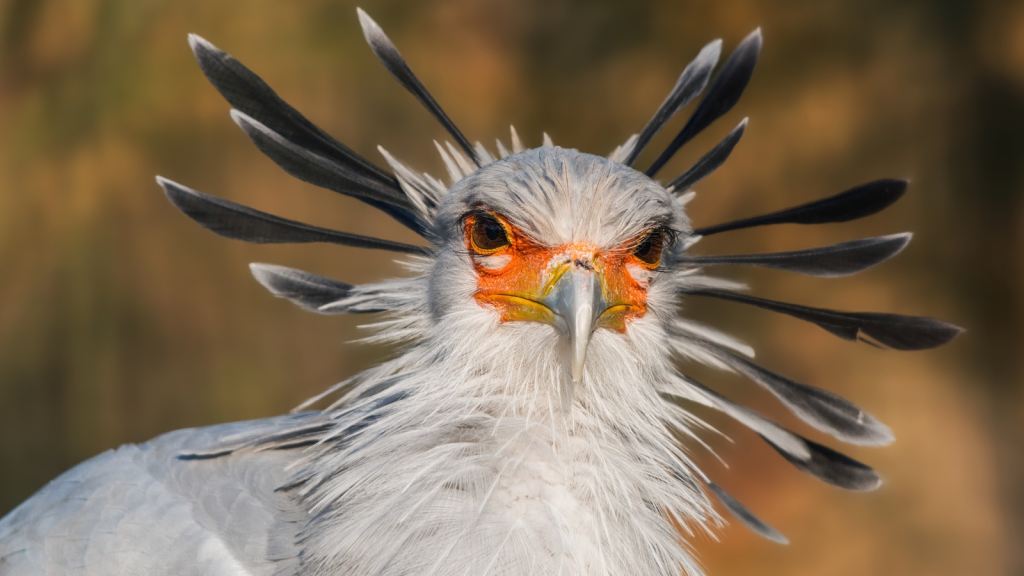The secretary bird is a marvel of the African savanna, known for its striking appearance and unique hunting abilities. With long, crane-like legs and a fierce, eagle-like beak, this bird cuts an impressive figure as it stalks through the grasslands. While many know it as a skilled hunter of snakes, there’s much more to this fascinating creature than meets the eye. From its peculiar name to its unexpected behaviours, the secretary bird is full of surprises. Here are ten unusual facts about this remarkable African bird that might just change the way you see it.
Its Name Has Nothing to Do with Office Work
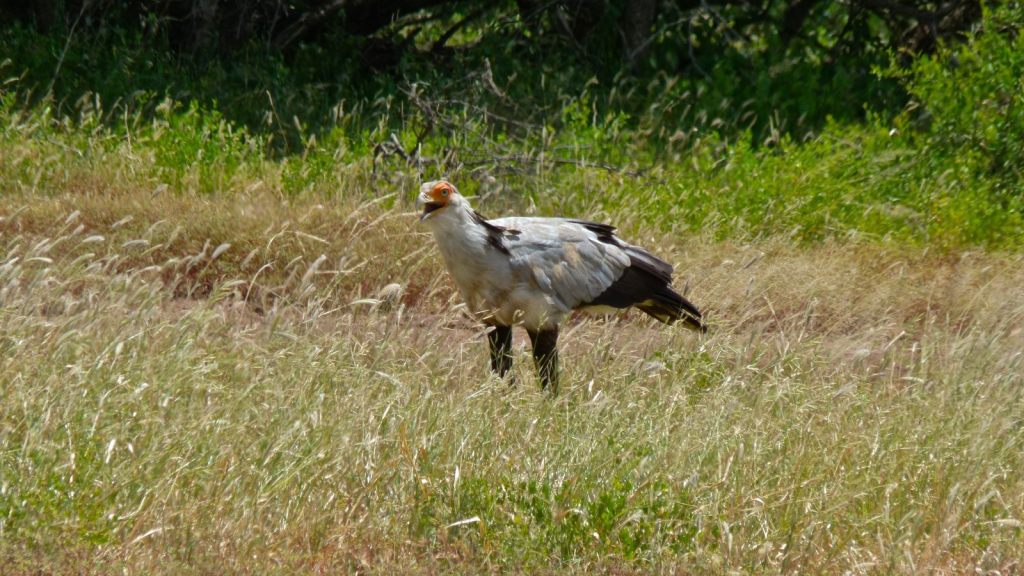
Despite what you might think, the secretary bird’s name isn’t related to typing or filing. It likely comes from the Arabic ‘saqr-et-tair’, meaning ‘hunter bird’. Some think it’s because of the crest of feathers behind its head, which look a bit like the quill pens that secretaries once tucked behind their ears. The bird’s scientific name, Sagittarius serpentarius, reflects its reputation as an archer of snakes.
It’s More Closely Related to Eagles Than Cranes
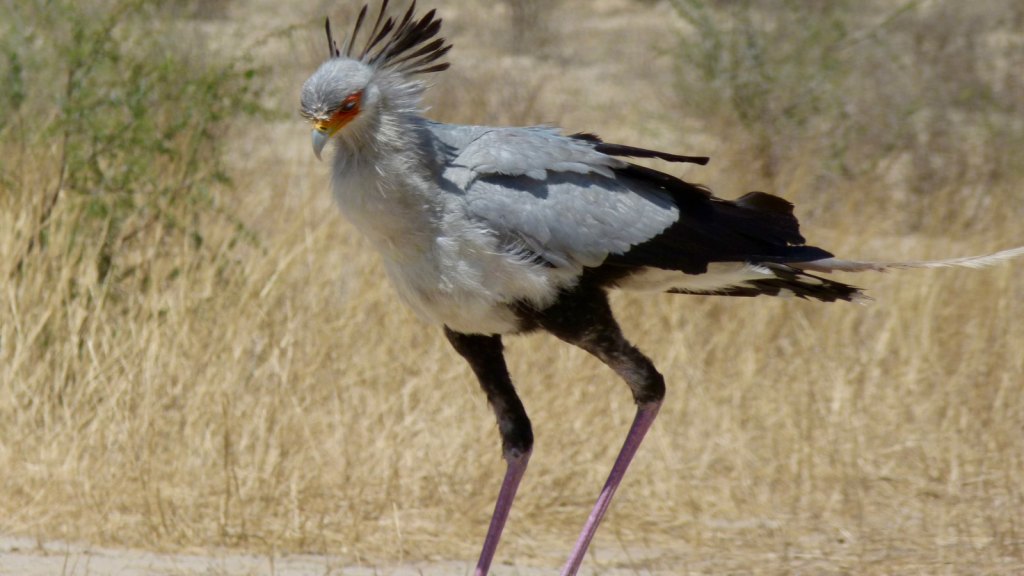
Although it looks like a crane with its long legs, the secretary bird is actually a bird of prey. It’s part of the same family as eagles and hawks. This explains its hooked beak and sharp talons, which are perfect for catching and killing prey. Despite its raptor lineage, the secretary bird is the only member of its genus, making it a unique species in the bird world.
It Stomps Its Prey to Death
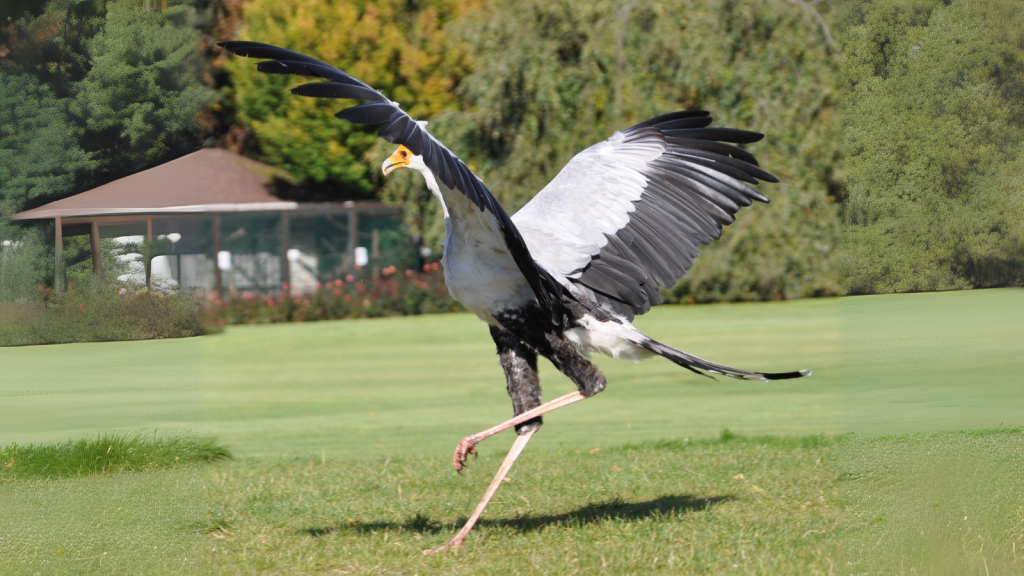
Unlike other birds of prey that use their beaks or talons to kill, the secretary bird prefers to stomp. It uses its long, powerful legs to deliver quick, hard kicks to its prey. These kicks can be so strong that they can kill a snake with a single blow. The bird’s kick force has been measured at five times its body weight, making it a formidable opponent for any creature unlucky enough to be its target.
It Has the Longest Legs of Any Bird of Prey

The secretary bird’s legs are incredibly long, making up about 59% of its body length. These legs aren’t just for show – they’re crucial for the bird’s unique hunting style and help it see over tall grass as it searches for prey. Their exceptional length also allows the bird to wade through shallow water, expanding its hunting grounds.
It Can Fly but Prefers to Walk
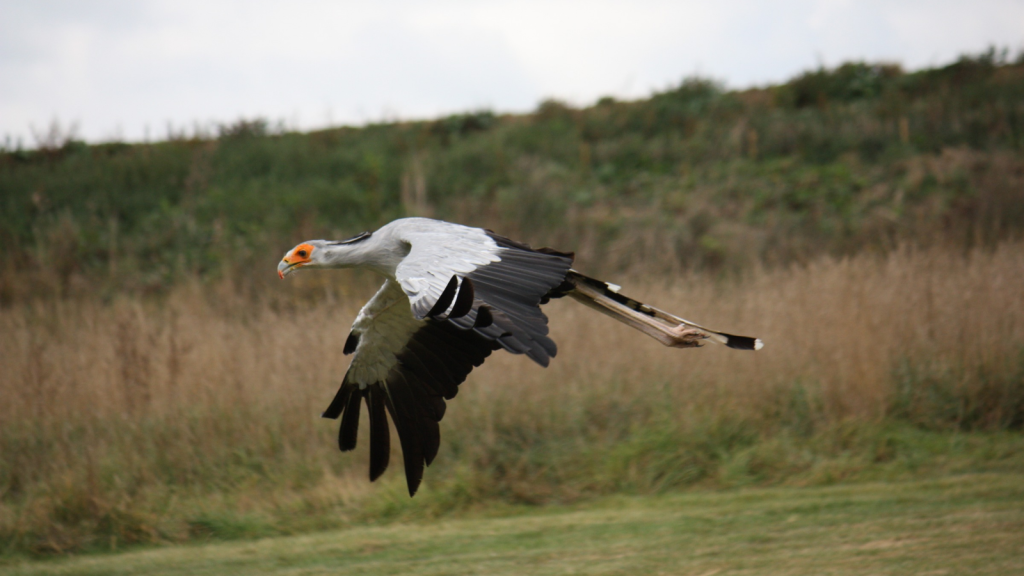
Despite being fully capable of flight, the secretary bird spends most of its time on the ground. It can walk up to 20 miles a day, using its long legs to cover large areas of grassland in search of food. When it does take to the air, it’s an impressive sight, with a wingspan that can reach up to 2.1 metres.
It Has Eyelashes

Unlike most birds, secretary birds have visible eyelashes. These aren’t just for looks – they help protect the bird’s eyes from sun and dust as it hunts in dry, open areas. The eyelashes are actually modified feathers, a unique adaptation among birds of prey.
It’s Monogamous and Mates for Life
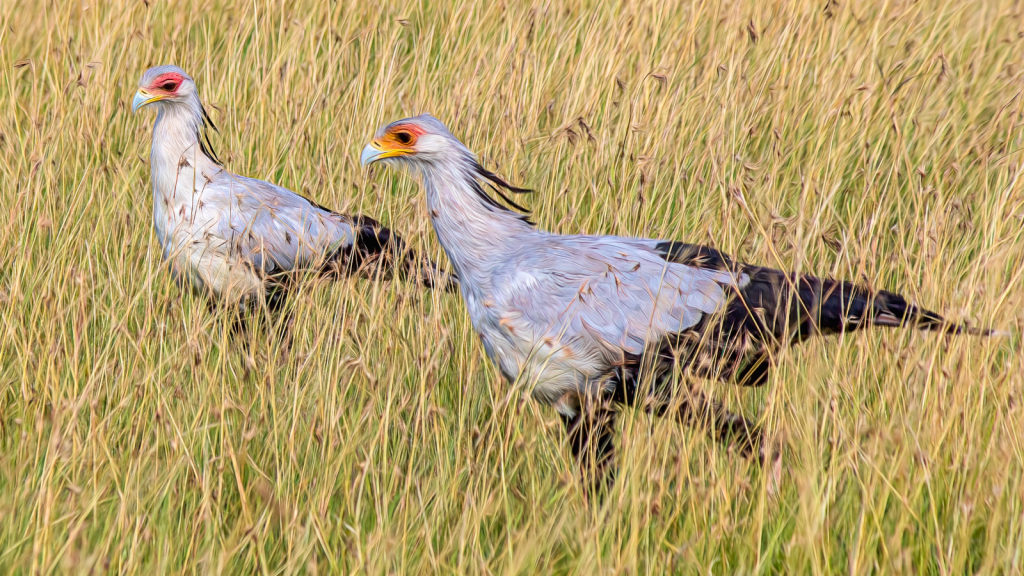
Secretary birds are romantic at heart. They form strong pair bonds and often stay with the same mate for life. Both parents help build the nest and care for their young, taking turns to incubate the eggs and feed the chicks. Their nests are enormous platforms of sticks that can measure up to 2.5 metres across, usually built at the top of a thorny tree.
It Does a Peculiar Mating Dance
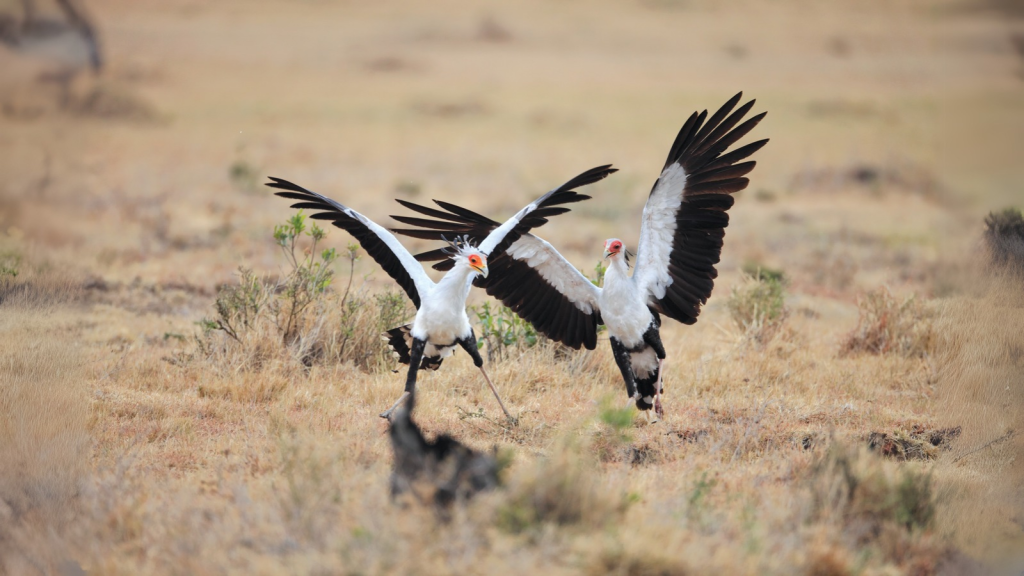
During courtship, secretary birds perform an unusual dance. They spread their wings, bob their heads, and chase each other around in circles. This dance helps strengthen their bond and can last for several days. The male often presents the female with small prey items as gifts during this courtship ritual.
It’s Featured on Sudan’s Coat of Arms

The secretary bird is so admired in Africa that it appears on Sudan’s coat of arms. It represents strength, resilience, and the country’s natural beauty. The bird’s image has also been used on postage stamps in several African countries, highlighting its cultural significance across the continent.
It Can Take Down Venomous Snakes
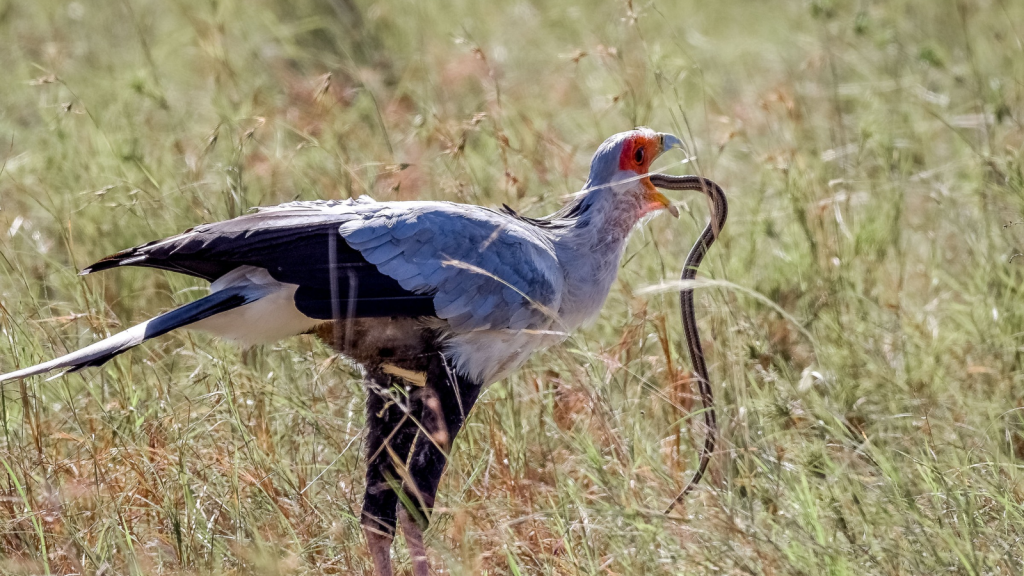
Secretary birds are known for their ability to hunt and kill venomous snakes. Their thick, scaly legs provide protection against snake bites, allowing them to tackle even the most dangerous serpents. They’ve been observed killing and eating cobras and adders, making them a natural form of pest control in areas where these snakes are common.
Becky is a fervent wildlife enthusiast and pet care expert with a diploma in canine nutrition. Her love for animals stretches beyond the domestic, embracing the wild tapestry of global fauna. With over a decade of experience in animal welfare, Becky lends her expertise to OutlandishOwl through insightful articles, captivating wildlife information, and invaluable guidance on pet nutrition. Her work embodies a deep commitment to understanding the intricate lives of animals and a passion for educating others on sustaining natural habitats. Becky's hands-on conservation efforts and her knack for translating complex dietary science into practical pet feeding tips make her an indispensable voice for creatures great and small.

